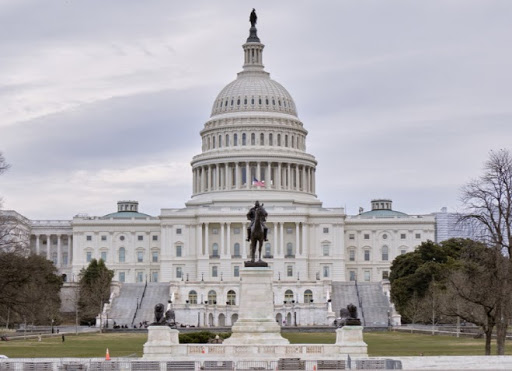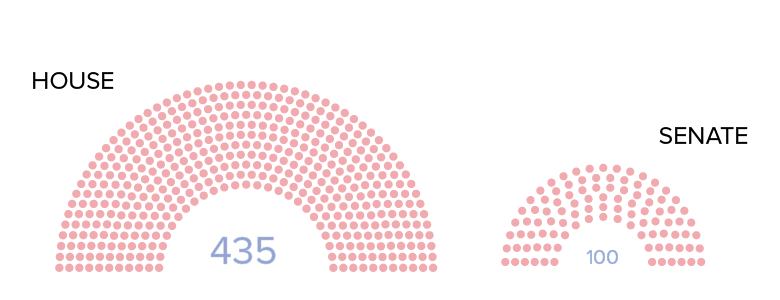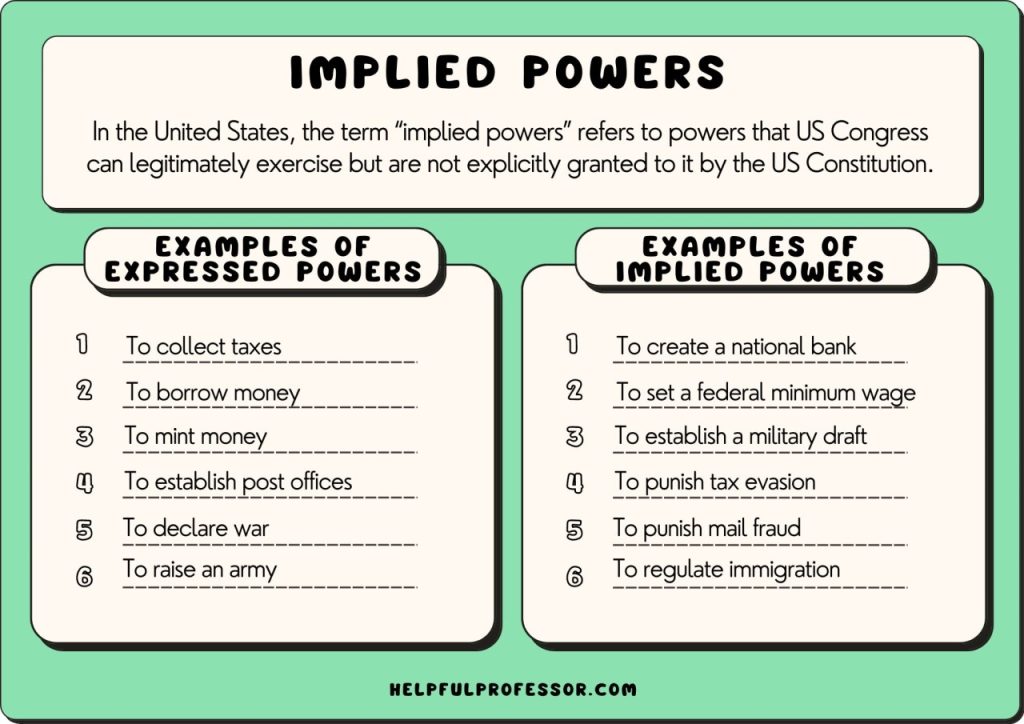2.1 Congress: The Senate and the House of Representatives
6 min read•june 18, 2024
Jed Quiaoit
S
Samantha Howey
AP US Government 👩🏾⚖️
240 resourcesSee Units

Congress is the bicameral legislature that writes the laws for the nation. It is made up of the House of Representatives which has 435 members and the Senate which has 100 members.
The United States Congress is comprised of two chambers: the Senate and the House of Representatives. These two bodies serve different purposes in the legislative process and have different means of representation. 🏠
The Senate is designed to represent the states equally, with each state being allotted two senators regardless of population. This was established in order to ensure that smaller states had equal representation to larger states in the legislative process. The Senate was created to serve as a check on the power of the House of Representatives, which is designed to represent the population.
The House of Representatives, on the other hand, is designed to represent the population of the country. Members of the House are elected based on the population of their districts, with larger districts having more representatives than smaller ones. The number of representatives for each state is determined by a census taken every ten years. The idea behind this is to ensure that the voices of citizens from larger populated areas are heard in the legislative process, as they make up a larger portion of the overall population.
Together, the Senate and the House of Representatives provide a balance between the representation of states and the representation of the population. This balance is fundamental to the functioning of the United States government and helps to ensure that both the interests of states and the interests of the people are taken into account when making decisions that affect the country as a whole. This dual legislative structure ensures that no one branch of government becomes too powerful.
The House of Representatives
The House of Representatives is one of the two chambers of the United States Congress, and its primary purpose is to represent the population of each individual state. 💯
The number of congressional districts within a state is determined by a census that is conducted every ten years. This census helps to ensure that each district is equal in population and that the voices of citizens are heard in the legislative process.
The way in which the districts are drawn, however, can be influenced by the political party in control of the state legislature. This is because the state legislature is responsible for redrawing the districts to make sure each district is equal in population. In some cases, the legislature may choose to gerrymander the districts in a way that gives their political party an advantage in future elections.
Every two years, there is an election for all 435 seats of the House of Representatives. Once elected, representatives serve two-year terms. The elections for congressional seats take place within each individual congressional district.
To be eligible to serve as a member of the House of Representatives, one must be
- at least 25 years old
- live in the state they wish to represent
- be a citizen of the United States for 7 years or more
Congressional districts have a smaller constituency than the state as a whole, and many House members have "safe seats," meaning that the political party in control of the district is highly likely to remain in control. This often leads to high incumbent election rates, as voters are more likely to re-elect the current representative rather than vote for a new candidate. Nevertheless, the House of Representatives remains a crucial part of the legislative process and plays an important role in representing the interests of the American people.

Source: Science Friday
The Senate
The Senate, on the other hand, is designed to represent the states equally. Each of the 50 states is represented by two senators, giving the Senate a total of 100 members.
Every two years, one-third of the Senate is up for re-election. When elected, senators serve six-year terms, and the elections take place on a statewide basis. In order to become a senator, an individual must be at least 30 years old and meet other eligibility requirements set forth by the U.S. Constitution.
Compared to the House of Representatives, the Senate has fewer rules due to its smaller membership. Nevertheless, the Senate plays an important role in the legislative process and is responsible for representing the interests of the states. The different term lengths of the two chambers can affect the formation of coalitions and can impact the balance of power within the legislative branch. 🪙
Powers
The United States Constitution outlines the powers of the federal government and divides these powers between the legislative, executive, and judicial branches. The Constitution grants Congress both explicit and implicit powers that are necessary for the creation and implementation of public policy. 👍
The enumerated powers of Congress allow for the creation of public policy in several important areas.
For example, Congress has the power to pass a federal budget, which outlines the spending and revenue plans of the federal government. This power is critical to the functioning of the government and enables Congress to make decisions about the allocation of resources and funding for various programs and initiatives.
Congress also has the power to raise revenue through taxes and to coin money, which helps to ensure the stability of the economy and provide the government with the resources it needs to carry out its responsibilities.
Another important power of Congress is the ability to declare war and maintain the armed forces. This power is critical to the security of the nation and enables Congress to respond to national security threats and defend the country from harm.
Additionally, Congress has the power to enact legislation that addresses a wide range of economic, environmental, and social issues. This power is based on the necessary and proper clause, which gives Congress the authority to pass laws that are deemed necessary and proper to carry out its other powers and duties. Through this, Congress can respond to changing circumstances and to address issues of national importance, such as protecting the environment, promoting economic growth, and addressing social issues such as healthcare, education, and civil rights.

Source: Helpful Professor
Illustrative Example: OBRA 1985
The Omnibus Budget Reconciliation Act of 1985 (OBRA 1985) is a significant piece of legislation passed by the U.S. Congress that demonstrates the power of the legislative branch to shape public policy and manage the nation's finances.
OBRA 1985 was enacted as a response to the federal budget deficit, which was growing rapidly in the 1980s. The legislation aimed to reduce the deficit by making significant changes to a range of government programs, including reducing spending on social welfare programs and increasing revenue through changes to tax law.
The passage of OBRA 1985 required a significant exercise of congressional power, including the use of the budget reconciliation process, which allows for certain budget-related legislation to pass with a simple majority vote in the Senate, bypassing the normal filibuster process. This allowed the legislation to pass even in the face of opposition from some members of Congress.

Source: True Coverage
OBRA 1985 demonstrates the power of the legislative branch to shape public policy and manage the nation's finances. It also highlights the ability of Congress to respond to pressing economic and financial issues, even in the face of political opposition. The legislation was widely seen as a significant step towards reducing the federal budget deficit and restoring the nation's financial stability.
Altogether, OBRA 1985 is an important example of the powers of the U.S. Congress in shaping public policy and managing the nation's finances. It demonstrates the ability of the legislative branch to respond to pressing economic and financial issues, even in the face of political opposition, and highlights the critical role that Congress plays in ensuring the stability and security of the nation.
🎥 Watch: AP GOPO - Chambers of Congress
Browse Study Guides By Unit
🏛Unit 1 – Foundations of American Democracy
⚖️Unit 2 – Branches of Government
✊🏽Unit 3 – Civil Liberties & Civil Rights
🐘Unit 4 – American Political Ideologies & Beliefs
🗳Unit 5 – Political Participation
🤔Exam Skills

Fiveable
Resources
© 2025 Fiveable Inc. All rights reserved.